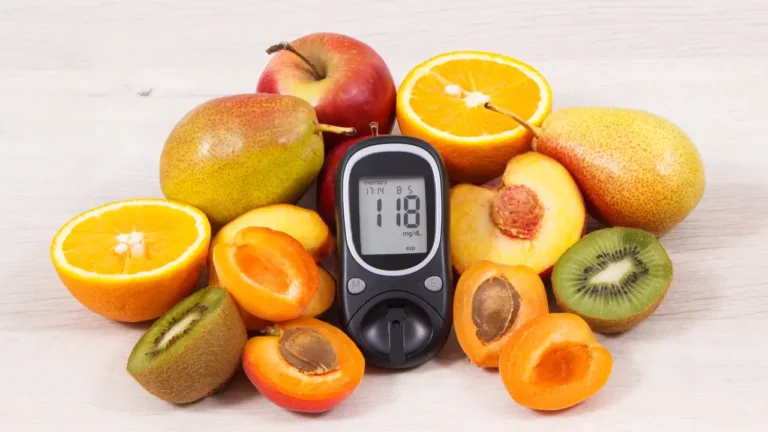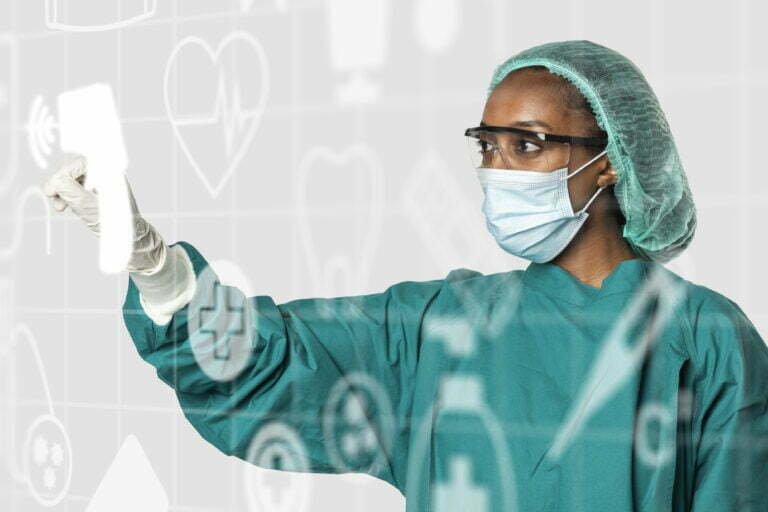Remote Patient Monitoring (RPM) represents a significant evolution in healthcare, allowing providers to track a patient’s health data outside of traditional clinical settings using connected medical devices. This technology bridges the gap between office visits, providing a continuous stream of health information that enables clinicians to monitor conditions remotely and intervene when necessary. From managing chronic diseases to expanding healthcare access, RPM is reshaping patient care across the United States.
How Does Remote Patient Monitoring Work? A Detailed Breakdown
The operational framework of RPM is a multi-step clinical service designed to be both effective and secure. While the technology is the enabler, the process is centered on patient care, clinical oversight, and consistent engagement.
1. Data Collection: Equipping and Educating the Patient
The process begins with identifying a patient who can benefit from RPM for an acute or chronic condition. The first crucial step is patient education and device setup. The clinical team explains the purpose of the program, how the specific device works, and how to use it properly to ensure accurate readings. This onboarding is critical for building patient trust and engagement.
Once onboarded, patients use connected medical devices to collect their own physiological health data, such as blood pressure, weight, or blood glucose levels. These devices are equipped with internal sensors that measure vital signs and other health indicators as prescribed by the care team.
2. Data Transmission: Securely Connecting Patient to Provider
After data is collected, the RPM devices automatically transmit it to a secure platform for the healthcare provider to review. This transmission typically occurs in near real-time using various technologies, including Bluetooth, Wi-Fi, or cellular networks. Cellular-enabled devices are often preferred as they are simpler for patients, removing the need for a home internet connection or smartphone pairing.
To protect sensitive patient information, this entire process must be compliant with the Health Insurance Portability and Accountability Act (HIPAA). Data is encrypted during transmission and storage to ensure it is protected from unauthorized access.
3. Data Analysis and Review: Turning Data into Insights
Healthcare providers and their clinical staff access the transmitted patient data through a secure software portal or dashboard, which is often integrated with the practice’s Electronic Health Record (EHR) system. Here, the team can review the information, monitor trends, and identify any potential issues or deviations from the patient’s normal baseline. Modern RPM platforms can help filter vast amounts of data, preventing information overload and highlighting the most clinically significant changes.
4. Clinical Intervention: Proactive and Personalized Care
Based on the analyzed data, providers can make timely and informed decisions about patient care. This proactive approach allows for a level of personalized care that is not possible with traditional, episodic office visits. Interventions may include:
- Adjusting medications
- Recommending lifestyle changes
- Scheduling a follow-up telehealth or in-person appointment
This ability to intervene early, based on real-time insights, is a cornerstone of RPM’s value, helping to prevent minor issues from escalating into serious health events.
The Benefits of Remote Patient Monitoring
The adoption of RPM is driven by clear, quantifiable benefits for patients, providers, and the healthcare system as a whole.
- Improved Patient Outcomes: By enabling continuous monitoring and early intervention, RPM helps patients better manage chronic conditions. Studies have shown that RPM can lead to clinically significant reductions in HbA1c levels for patients with diabetes and can lower the risk of hospital readmissions for those with moderate to severe COPD.
- Increased Patient Engagement: RPM empowers patients to take a more active role in their own care. Access to their own health data helps them better understand their condition and the impact of their treatments, leading to greater satisfaction and adherence to care plans.
- Reduced Healthcare Costs: RPM can lower overall healthcare costs by reducing the need for frequent doctor visits and preventing costly emergency room visits and hospitalizations. A McKinsey report estimated that up to $265 billion in U.S. healthcare services could be shifted from facilities to the home, with RPM as a key enabler.
- Enhanced Accessibility: RPM improves access to care for patients in remote, rural, or underserved areas. It removes geographical and mobility barriers, allowing patients to receive high-quality, continuous care from specialists regardless of their location.
- Real-time Insights: Providers gain a more comprehensive and continuous view of a patient’s health status. This allows for more timely and effective interventions, moving from a reactive to a proactive model of care.
Examples of RPM Devices
A diverse ecosystem of medical-grade, FDA-regulated devices powers RPM services. To be used for RPM, a device must meet the FDA’s definition of a medical device and be able to automatically transmit data electronically. Common examples include:
- Blood Pressure Monitors: Essential for managing hypertension, these connected cuffs provide a more accurate picture of a patient’s blood pressure outside of the clinical setting.
- Weight Scales: Critical for managing conditions like congestive heart failure, where sudden weight gain can signal fluid retention.
- Glucose Meters: Connected glucometers and Continuous Glucose Monitors (CGMs) are a cornerstone of modern diabetes management, allowing for real-time tracking of blood sugar levels.
- Pulse Oximeters: These devices measure blood oxygen saturation levels, vital for monitoring patients with respiratory conditions like COPD.
- Wearable Sensors: This broad category includes smartwatches and patches that can track various metrics like heart rate, activity levels, and sleep patterns.
DrKumo: A Leader in Secure and Intelligent Remote Patient Monitoring
At the forefront of this healthcare transformation is DrKumo, a leader in providing secure, intelligent, and proven digital health solutions for chronic care management. DrKumo’s platform is designed to make home health monitoring effortless for patients while providing healthcare professionals with the tools needed for timely and effective intervention.
Certified by URAC and recognized as one of four providers in a $1.032 billion contract with the U.S. Department of Veterans Affairs, DrKumo sets the standard for excellence in the field. The platform is built on a foundation of Federal Healthcare Enterprise Cybersecurity, adhering to stringent regulations including VA Directive 6500, FIPS 140-3, and HIPAA. This commitment to security ensures that all patient data is protected with the highest level of integrity.
DrKumo’s multi-award-winning solutions offer a comprehensive approach to RPM, integrating several key components:
- Advanced Technology: The platform utilizes state-of-the-art hardware and software, including a wide range of FDA-cleared medical devices like blood pressure monitors, glucometers, and pulse oximeters. These devices feature cellular, Wi-Fi, and Bluetooth connectivity for seamless, real-time data transmission.
- Intelligent Platform: At the core of the system is a proprietary, HIPAA-compliant Provider Console. This web-based hub receives and organizes all physiologic data in real-time, creates timestamps for all patient interactions, and generates both clinical and billing reports.
- AI-Powered Insights: DrKumo leverages cutting-edge Artificial Intelligence and Machine Learning (AI/ML) to analyze data, identify trends, and support Disease Management Protocols (DMP). This intelligent layer transforms raw data into actionable insights, empowering providers to optimize patient health and prevent hospital overcapacity.
By combining robust technology with intelligent data analysis, DrKumo is transforming how chronic care is delivered, empowering patients to manage their health with confidence from home.
Takeaways
RPM is more than just technology; it is a comprehensive clinical service that is fundamentally changing healthcare delivery in the United States. By following a structured process of patient education, data collection, secure transmission, and clinical analysis, RPM enables providers to offer proactive, personalized, and continuous care.
The benefits are clear: improved patient outcomes, higher engagement, reduced costs, and expanded access to care. As technology continues to advance and leaders like DrKumo pioneer new solutions, RPM is poised to become an even more integral part of managing chronic disease and promoting overall health and wellness.
See how RPM works in your clinic—safely and at scale. Contact DrKumo now!
Disclaimer
This content is for informational and educational purposes only and is not medical, legal, coding, or billing advice. Remote Patient Monitoring (RPM) programs—including device selection, clinical protocols, and data review—must be ordered and supervised by licensed clinicians according to applicable federal and state laws. Coverage, eligibility, and reimbursement (e.g., CPT® codes 99453, 99454, 99457, 99458) vary by payer, plan, and jurisdiction; always confirm requirements with CMS, your MAC, and individual payers before billing.
References to HIPAA, FIPS 140-3, VA directives, URAC certification, and other security or regulatory frameworks describe platform capabilities and/or organizational designations; actual compliance depends on your organization’s configuration, policies, and use. Mentions of third-party resources (e.g., HHS, FDA, CMS, CDC) are provided as convenience links and do not imply endorsement.
RPM and any telehealth services are not for emergencies. If you believe you are experiencing a medical emergency, call 911 (or your local emergency number) immediately. Outcomes are not guaranteed and will vary by patient, condition, and clinical practice.








